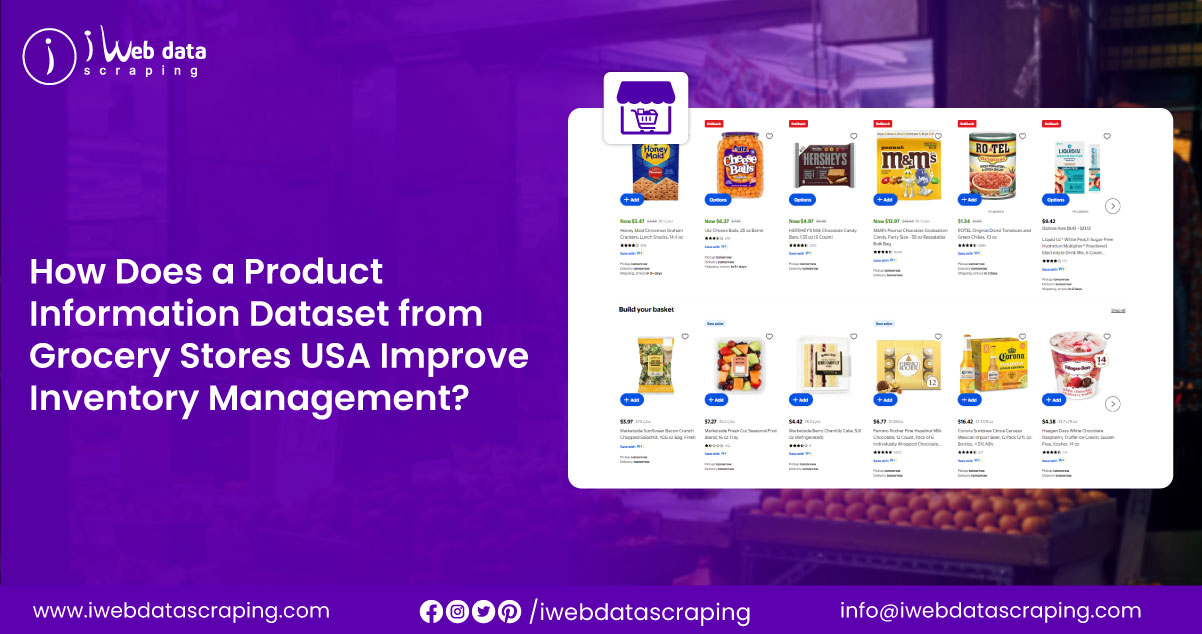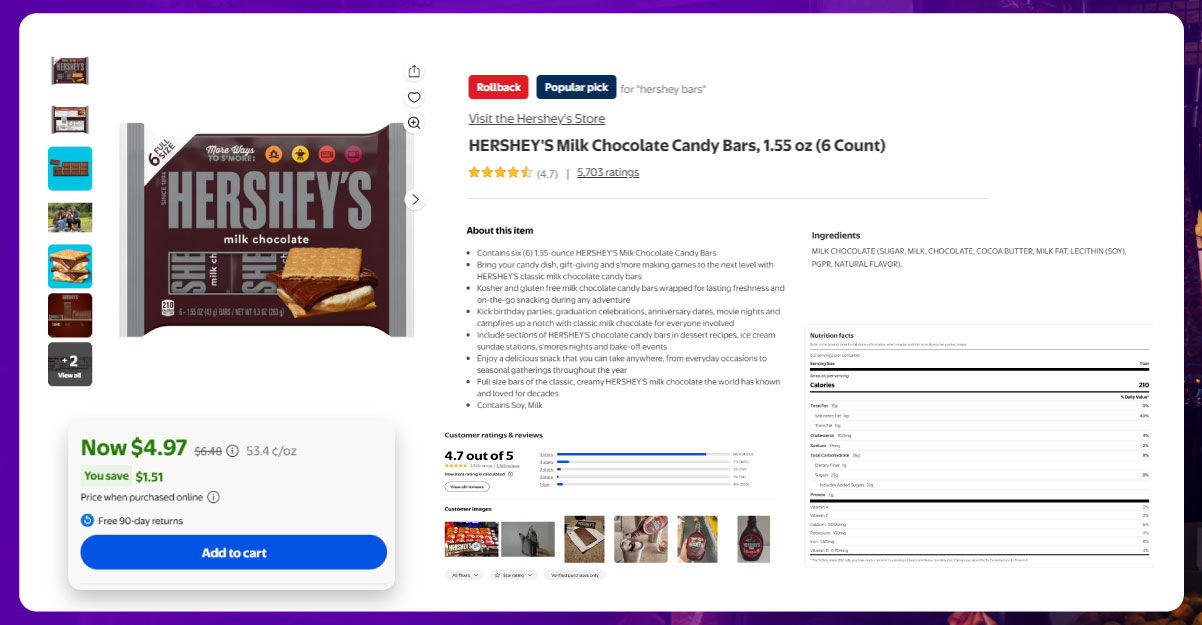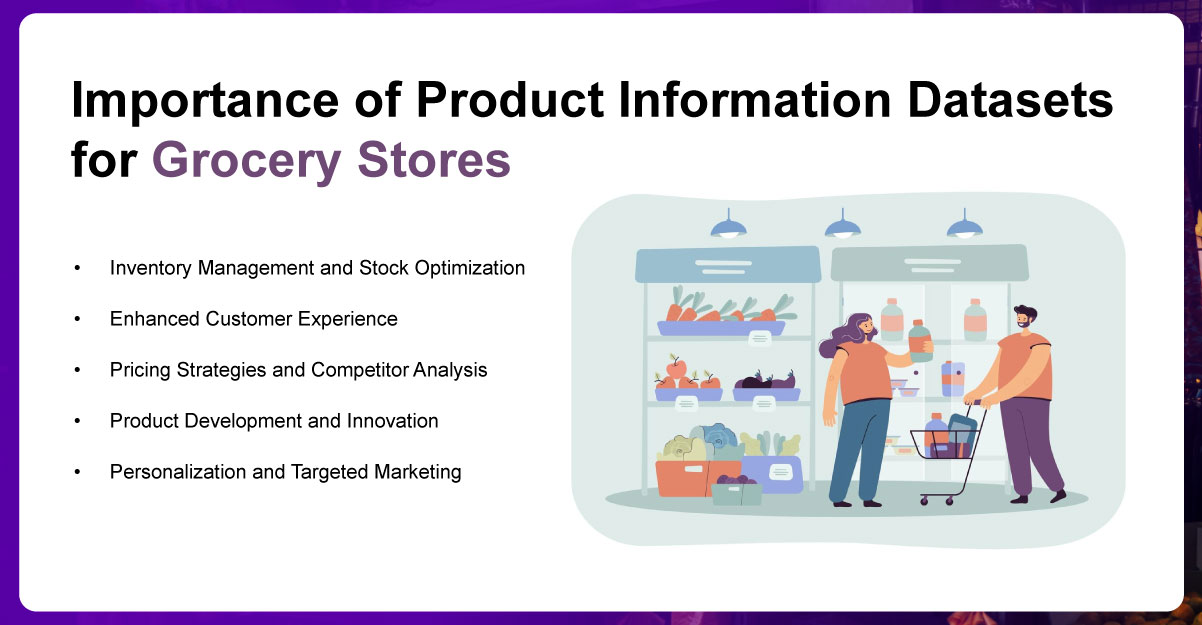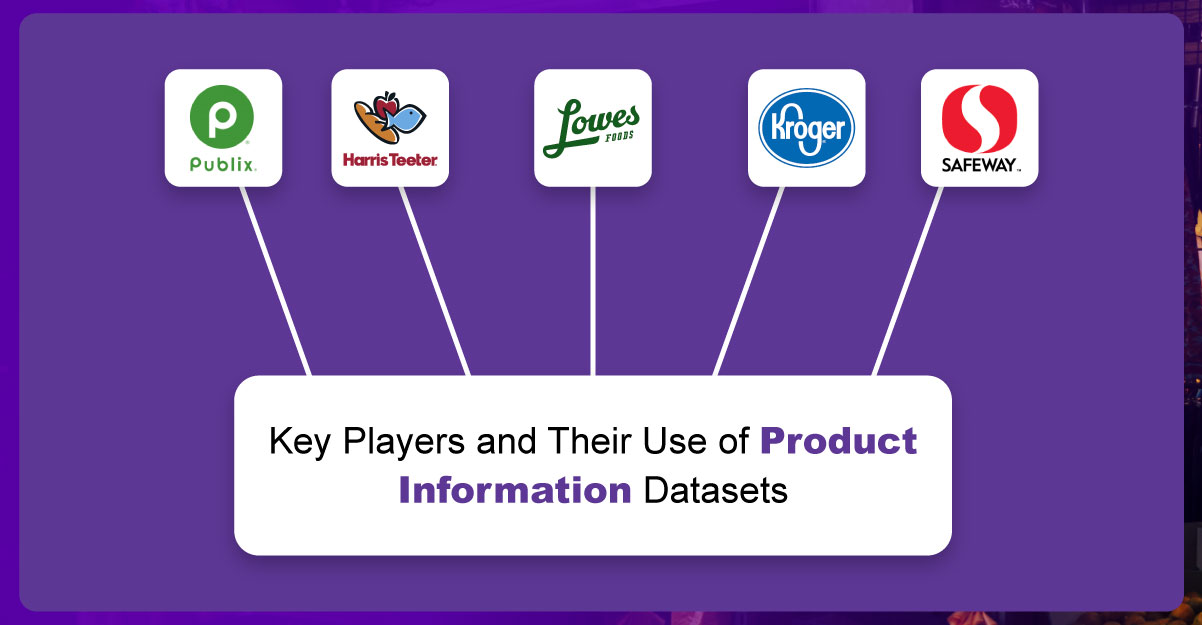How Does a Product Information Dataset from Grocery Stores USA Improve Inventory Management?

Introduction
The grocery industry in the United States is vast, with thousands of retailers catering to consumers' everyday needs. These retailers stock a wide range of products, from fresh produce to packaged goods, and increasingly, their data has become a valuable asset for businesses, analysts, and researchers. One of the key elements that powers insights into the grocery market is the Product Information Dataset from Grocery Stores USA, which contains comprehensive details about the items available in-store or online. For grocery stores like Publix, Harris Teeter, Lowes Foods, Kroger, and Safeway, the availability and accuracy of product data play a significant role in shaping consumer experiences, optimizing inventory management, and facilitating e-commerce strategies. In this blog, we will explore the importance of product information datasets from these prominent grocery chains, their use, and their impact on the industry.
With the rise of Real-time Grocery Store Data Scraping USA, businesses can access up-to-date data on product availability, prices, promotions, and more, enabling them to stay ahead in the competitive grocery market. This information is essential for understanding pricing strategies, tracking inventory, and providing customers with relevant product information. Retailers like Publix and Kroger benefit from real-time data to adjust their strategies based on customer demand and market trends.
Moreover, businesses looking to Scrape Grocery Store Product Price Data USA can leverage this data to analyze competitor pricing, understand regional price variations, and optimize pricing models. By integrating these datasets, grocery chains can gain a more comprehensive market view, improve customer experience, and enhance operational efficiency.
What Is a Product Information Dataset?

A product information dataset collects data points associated with the products sold by a retailer or e-commerce platform. For grocery stores, this includes product details such as:
Here's why this is essential in today's context:
- Product Name: The specific name of the item being sold.
- Category: Product classification, such as dairy, bakery, beverages, etc.
- Price: The cost of the product, which may include discounts or promotions.
- Description: Description: A product summary, including its features, ingredients, and usage instructions.
- Nutritional Information: Key data about the product's nutrition, such as calories, fat content, protein, etc.
- Brand: The manufacturer or brand of the product.
- Barcode: A unique identifier used for inventory and sales tracking.
- Images: Product images, often included for online platforms.
- Stock Levels: Information about the product's availability, in-store or online.
- Product Dimensions: Size, weight, and packaging details.
This structured data is valuable for businesses seeking to understand consumer preferences, optimize inventory levels, and improve the shopping experience.
Importance of Product Information Datasets for Grocery Stores

Data drives the modern retail landscape, and for grocery stores in the USA, product information datasets provide critical insights that fuel key business decisions. Here's why these datasets are so important:
- Inventory Management and Stock Optimization: Efficient inventory management is crucial for grocery stores, where the turnover of products is high. Maintaining the correct stock levels of perishable and non-perishable items ensures that customers always find what they need, without overstocking and risking waste. Web Scraping Grocery Stores Product Data allows stores to track inventory, monitor stock levels in real-time, and optimize restocking processes. For example, Kroger and Publix leverage such datasets to manage their extensive product catalogs efficiently, ensuring products are available when customers want them and preventing overstocking. This is particularly important during seasonal sales or holiday rushes when consumer demand fluctuates. Additionally, Lowes Foods and Safeway rely on these datasets to analyze trends in product movement. Using this data, they can make data-driven decisions about which products to keep in stock and which ones may not perform well enough to warrant continued shelving.
- Enhanced Customer Experience: With the rise of online grocery shopping, providing detailed product information online has become critical for enhancing the consumer shopping experience. Grocery stores can offer a seamless digital experience by having accurate and comprehensive datasets. Harris Teeter Data Scraping Services, for example, help provide online shoppers with detailed information about every item, including nutritional facts, allergens, and recipes that can help guide purchasing decisions. When customers have access to detailed product information, such as ingredients, nutritional benefits, and usage instructions, they feel more confident about their purchases, especially when making health-conscious choices. This level of transparency helps build trust and improves the overall customer experience. Furthermore, retailers like Safeway have incorporated these product information datasets into their mobile apps and websites, ensuring that customers can access the correct information at the right time, whether in-store or online shopping. Enhanced customer satisfaction leads to higher retention rates and increased sales.
- Pricing Strategies and Competitor Analysis: Pricing is among the most significant factors influencing a customer's shopping choice. Grocery chains must be highly strategic in setting and adjusting their prices based on market trends, competitor pricing, and customer demand. This is where Extract Supermarket Product Data USA plays a key role. With its massive footprint in the United States, Kroger utilizes these datasets to track competitor prices in real time. Kroger Grocery Delivery Data Scraping Services enable them to extract detailed product information, including prices, from various sources, and adjust their pricing accordingly. Similarly, Publix uses product datasets to track regional pricing variations and ensure its prices align with local market conditions. By continuously monitoring the prices of similar products in different locations, grocery chains can offer promotions or discounts tailored to specific customer segments, boosting sales and maintaining profitability.
- Product Development and Innovation: The grocery industry is increasingly driven by innovation, with new product lines being developed in response to changing consumer preferences and trends. The insights from product information datasets help grocery stores like Lowe's Foods and Harris Teeter identify these emerging trends early. For example, if a grocery store notices an increasing interest in plant-based or gluten-free products, it can expand its offerings to cater to this demand. This is possible by analyzing product listings, sales trends, and customer reviews. These insights allow grocery stores to stay ahead of the curve by introducing new products that match consumer needs. Lowes Foods Delivery Data Scraping Services can further help analyze customer feedback and purchasing behavior to launch data-backed innovations. Data-driven innovation can also be applied to packaging, sourcing, and labeling. Stores like Safeway use data from their product datasets to understand which packaging types are most effective, which items generate the most waste, and which products have the best environmental impact.
- Personalization and Targeted Marketing: Consumers today expect personalized shopping experiences, both online and in-store. Retailers like Kroger and Publix have embraced this trend by using product information datasets to segment their customer base and create personalized marketing campaigns. By analyzing data on customers' purchasing history, location, and preferences, these grocery stores can tailor promotions to specific individuals. For example, if a customer frequently buys gluten-free or organic products, the store can send targeted coupons for these products. Similarly, by understanding purchasing patterns and stock levels, stores can use Web Scraping Grocery Stores Product Data to suggest items that a customer will likely need soon.
This level of personalization not only increases sales but also fosters customer loyalty. Customers who receive personalized offers based on their preferences are more likely to return to the store for future purchases.
Transform your business with accurate grocery data—contact us now to start your data-
driven journey!
Key Players and Their Use of Product Information Datasets

Each of the grocery stores mentioned—Publix, Harris Teeter, Lowes Foods, Kroger, and Safeway—uses product information datasets in unique ways. Still, the core objective is to enhance their operational efficiency, improve the customer experience, and maintain a competitive edge in the marketplace.
- Publix: Known for its strong emphasis on customer service, Publix uses product information datasets to improve in-store displays and optimize its online product offerings. With detailed product data, Publix can help its customers make informed choices while shopping. Grocery Data Scraping Services supports this key use case and is designed to ensure accuracy and completeness.
- Harris Teeter: This chain provides customers comprehensive product information to facilitate a convenient shopping experience. Harris Teeter uses datasets to track nutritional facts, ingredients, and allergens to ensure its shoppers make health-conscious decisions. These insights are part of broader Grocery and Supermarket Store Datasets that fuel transparency and product clarity.
- Lowes Foods: Lowes Foods excels at using product datasets to enhance its local offerings and provide customized promotions. By analyzing local purchasing trends, the store can introduce region-specific products and campaigns to boost sales. This type of precision is further supported by tools that enable Grocery Pricing Data Intelligence , helping them adjust strategies to match local demand and competitor pricing.
- Kroger: As one of the largest grocery chains in the U.S., Kroger uses data extensively to optimize everything from pricing strategies to inventory levels. Product information datasets are at the heart of Kroger, providing insights that drive daily operations and strategic decisions. These datasets are often collected through Web Scraping Quick Commerce Data solutions that enable real-time monitoring of dynamic online listings.
- Safeway: Safeway uses its product information datasets to drive in-store inventory management and tailor its e-commerce platform. With rich product details available online, Safeway enhances the online shopping experience for its customers, ensuring consistency and availability across both physical and digital channels.
How iWeb Data Scraping Can Help You?
- Industry-Focused Expertise: We specialize in gathering detailed product, price, and availability data from major grocery chains, ensuring accuracy and relevance for your specific use case.
- Reliable Real-Time Data Access: Our services provide up-to-date information, enabling businesses to respond quickly to market changes, stock levels, and shifting consumer demands.
- Customizable Data Solutions: We tailor each data extraction to your specific needs—be it by store, category, region, or product type—delivering only the information that matters most to your goals.
- User-Friendly Output Formats: Our data is clean, well-structured, and ready for immediate use in reports, analytics tools, or your internal platforms.
- Scalable and Efficient Infrastructure: Whether you need data from a handful of stores or nationwide coverage, our technology is built to scale effortlessly without compromising speed or accuracy.
Conclusion
The grocery sector in the United States is a highly competitive and dynamic industry, with retailers constantly striving to improve their offerings and stay relevant in the eyes of consumers. Product information datasets are critical in shaping these strategies, enabling grocery stores like Publix, Harris Teeter, Lowes Foods, Kroger, and Safeway to optimize operations and enhance the shopping experience.
From inventory management to personalized marketing, these datasets provide invaluable insights leading to smarter decision-making, better customer experiences, and increased revenue. Extract Publix Supermarket Data > solutions, for instance, empower businesses to stay responsive to consumer needs, while Safeway Grocery Delivery Data Scraping Services help monitor delivery trends and item availability. Moreover, with the rise of digital shopping, Web Scraping Grocery App Data has become essential for real-time updates and accurate product listings across platforms. As technology continues to evolve, the importance of high-quality, structured product data will only grow. Retailers that leverage this data effectively will maintain a significant edge in the ever-competitive grocery market.
Experience top-notch web scraping service and mobile app scraping solutions with iWeb Data
Scraping. Our skilled team excels in extracting various data sets, including retail store locations
and beyond. Connect with us today to learn how our customized services can address your
unique project needs, delivering the highest efficiency and dependability for all your data
requirements.



